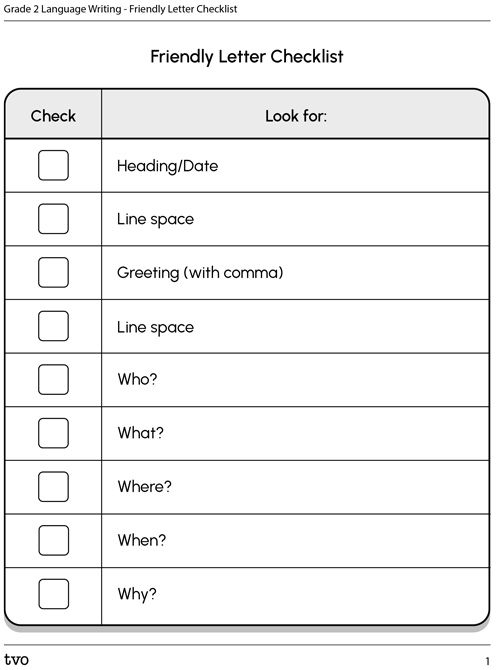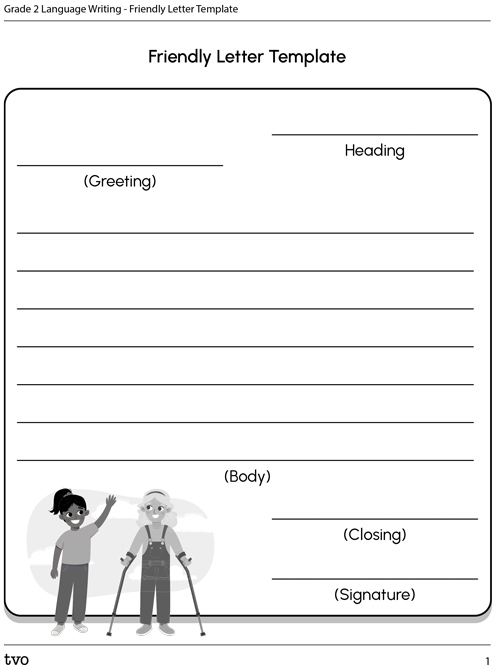Minds On
Getting the message
From carrier pigeons to text messages
Did you know that pigeons were the earliest form of text messaging?

In the past, pigeons played a very important role in delivering both friendly and important handwritten messages. These messages were called letters and were written in a letter format that you are going to learn how to do. You can choose to hand write your letter or type it using a voice-to-text tool or record your letter.
Action
So many ways to send a message these days!
Today there are many ways you can send a message to someone you care about. Try to think of as many different ways as you can. Say them aloud, share with someone else, or make a list.
Press the button ‘Ways to send messages’ to compare your responses with the ones provided.
|
a letter a card postcard |
text or speak to them face-to-face |
Some methods are faster, like speaking face-to-face, while some can take some more time, like writing a letter.
Why write or dictate a letter?
When we write a letter to someone, we give the recipient, the person receiving the letter, a special experience. They probably aren’t expecting your letter and will be pleasantly surprised when they receive it through the post office mail! Have you ever received a letter?
Let’s explore Lili’s situation in the following TVO episode of 16 Hudson. Lili’s friend Karla started in Ms. Emily’s class but moved away before the events in the episode “Mr. K.” After exploring the episode, we will examine how Lili writes a letter to her friend who has moved away to a new school.
Since Lili’s friend Karla moved away, Lili wants to share the events of what happened with her. Lili can write or dictate a friendly letter to Karla. When you dictate, this means recording your letter or using a text-to-voice tool.
Let’s examine Lili’s letter to Karla.
Example of a letter: Lili’s letter to Karla
|
Saturday, October 4 Dear Karla, Guess what happened at school this week? We got a new teacher! His name is Mr. K. We have him now because Ms. Emily is having a baby and won’t be back until next year! At first, I was mad. I couldn’t believe it. Sam and a bunch of us made a plan to scare Mr. K away but we found out we like him after all. He even made our math pop-quiz cool. We went outside with Hoola Hoops! This happened all on Mr. K’s first day! School isn’t the same without you and it never will be. I really hope our parents will let us have a play date soon. What is your new teacher like? I hope you like your new class and get to be class monitor like me. Will you please write me back? I really want to get a letter from the mailbox, and make sure you decorate the envelope with fun stickers and my favourite colours. Hugs, Lili |
Parts of a letter
After reading Lili’s letter, what do you notice about how it was written?
Do you notice how it begins? We call that a heading or date, and the greeting. When we write a greeting, such as “Dear Karla,” a comma is used.
Do you notice there are empty line spaces in the letter? These line spaces separate the date from the greeting and the greeting from the body. The body is the message in the letter. It’s what we write in the letter.
Next, look at how Lili signs off to close her letter at the end. Lili uses a comma after the closing (“Hugs,”), and then adds another empty line space before she writes her name. She doesn’t need a period after her name.
Lili’s letter is an example of a Friendly Letter. Looking at the graphic provided, we can examine the parts of a Friendly Letter. A Friendly Letter includes the following:
- date or heading
- greeting
- body
- closing
- signature
Now, let’s take a closer look at the parts of a Friendly Letter in Lili’s letter.
|
Part of Friendly Letter |
Lili’s Letter |
|
Heading or Date |
Saturday, October 4 |
|
line space |
|
|
Greeting |
Dear Karla, |
|
line space |
|
|
Body |
Guess what happened at school this week? We got a new teacher all of a sudden! His name is Mr. K and he just showed up. We have him now because Ms. Emily is having a baby and won’t be back until next year! At first, I was mad. I couldn’t believe it. Sam and a bunch of us made a plan to scare Mr. K away but we found out we like him after all. He even made our math pop-quiz cool. We went outside with Hoola Hoops! School isn’t the same without you and it never will be. I really hope our parents will let us have a play date soon. What’s your new teacher like? I hope you like your new class and get to be class monitor like me. Will you please write me back? I really want to get a letter from the mailbox, and make sure you decorate the envelope with fun stickers and my favourite colours. |
|
line space |
|
|
Closing (remember the comma) |
Hugs, |
|
line space |
|
|
Signature |
Lili |
When writing or dictating a friendly letter, you should try to include the 5W’s and H: WHO, WHAT, WHERE, WHEN, WHY and HOW. In Lili’s letter, how were the 5W’s and H included?
Think about who you are writing to, and who you are writing about.
Lili shows awareness that Kara is probably adjusting in her new school and shows interest in her friend’s life.
Tell what happened. In Lili’s letter, the class got a new teacher. Share some details. In Lili’s letter, she includes her plan to scare Mr. K away and that they played with Hoola-Hoops.
Lili is clear that she is writing about what happened at school.
Lili writes what happened this past week.
Lili explains why they got a new teacher. Ms. Emily was having a baby.
Lili writes how Mr. K just showed up.
Punctuation
If you are asking a question, use the question mark. If you want your reader to be surprised, use an exclamation mark!
Try to see if you can spot some punctuation errors in the letter below. How would you correct the errors?
Clasp envelope
Now that you know how to write a letter, you’re ready to label your envelope. You’ll need:
- the proper postage stamp
- the address of the recipient (where the recipient lives)
- your address
The stamp goes on the top righthand corner of the envelope. Make sure it is glued or stuck on well or it will not be get delivered!
Put the name and the address of the recipient, where you’re sending your letter to, on the front and center of the envelope.
Your address goes on the top right lefthand corner or the back of the envelope on the clasp. The clasp is the part that folds down to close the envelope. Remember to fold your letter and put it in the envelope before sealing the clasp!
You may want a trusted adult to help you.
However, we can also choose to email our letter as well. To do that all we need is the recipient’s email address. Once we have that, it’s as easy as pressing send!
Consolidation
Friendly letter about a celebration
Think about a time when you attended a celebration with your family or friends. Who was there? What did you do? When was it?
Write a letter to someone special about your experience at the celebration.
Remember to follow the parts of a friendly letter and put 2 lines of spacing between them. Write your letter in your journal, letter template paper or online. To get started, it might be helpful for you to talk out your ideas aloud to your recipient.
Use the Friendly Letter Checklist in your notebook or use the following fillable and printable document to help guide you and to check over your work.
Friendly Letter Checklist
Look for
Body
Punctuation
Use the Friendly Letter Template in your notebook or use the following fillable and printable document to help write your letter.
Reflection
How do you feel about what you have learned in this activity? Which of the next four sentences best matches how you are feeling about your learning? Press the button that is beside this sentence.
I feel…
Now, record your ideas about your feelings using a voice recorder, speech-to-text, or writing tool.
Press ‘Discover More’ to extend your skills.
Discover MoreWrite a letter to someone absent
We can write a letter to someone you can’t or don’t see anymore. This can help especially when we really miss them, wish they were there with us and wish we could talk to them face-to-face in person.
Write a letter to yourself
You can also write a letter to your past or future self. You can also write a letter to your future self and put it in a time capsule with a planned future date to open it. When you read it in the future, you’ll see how much you have changed! Write a letter to your past self if you feel badly about something you cannot change and help forgive yourself and learn from a past mistake.
Write a letter for some time out
Sometimes if we don’t have someone to talk to, or we’re not ready to share with someone yet, we can share our feelings on paper by writing a letter to ourselves. This can help us understand how we’re feeling and give us some time out to be alone with our emotions.
Write a letter to your favourite character
We can even write a letter to a favourite fictional character from a favourite story! Try it out: you might find it fun!

